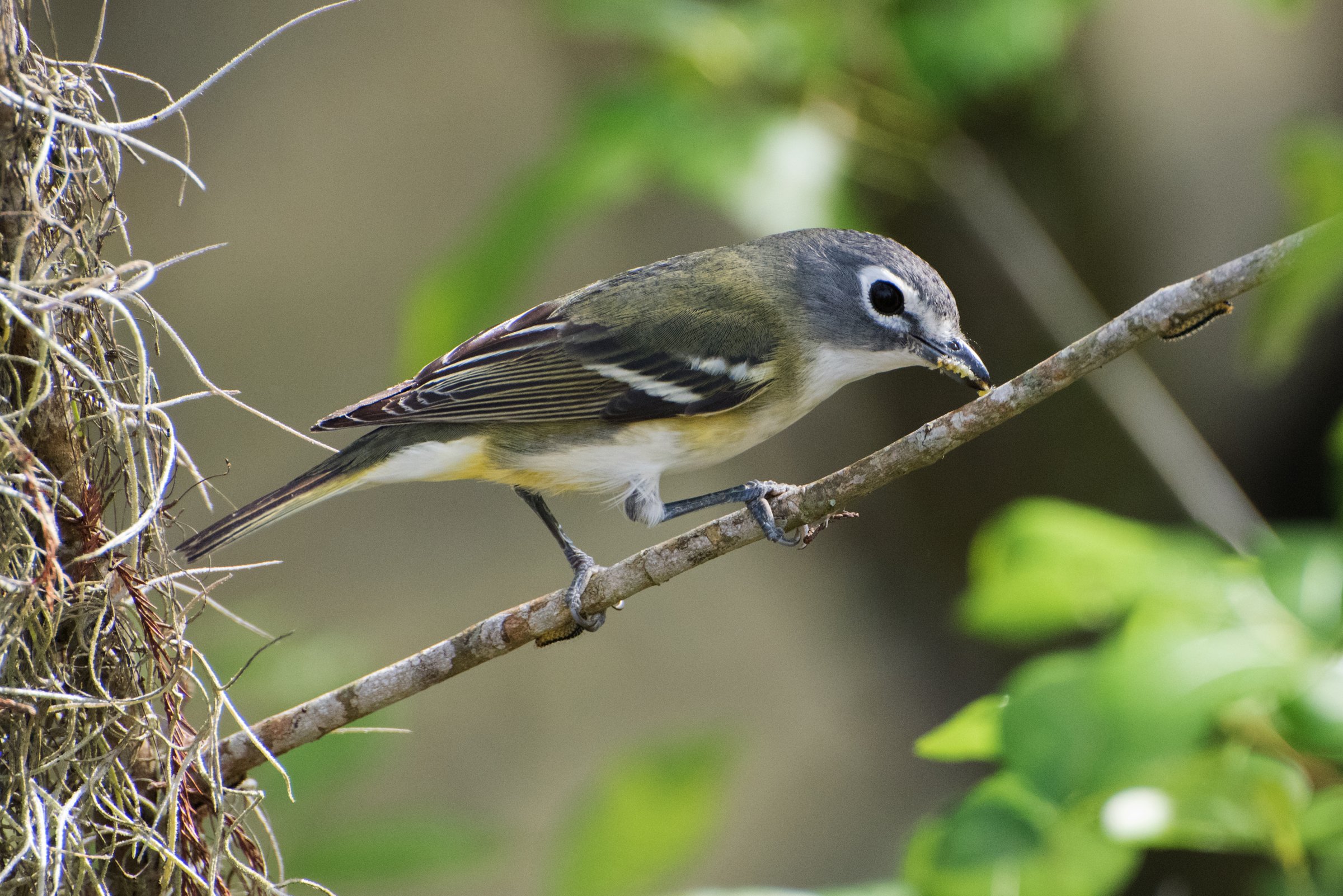Photo: Brown Thrasher, Will Stuart/Audubon Photography Awards
Greg Butcher
What is the most popular activity at Upton Hill Regional Park in Arlington? Is it the waterpark? The huge climbing apparatus? Mini-golf? Batting cages?
What few people know is that there is a lot of natural habitat at Upton Hill, and that habitat attracts a lot of migratory birds. In that sense, Upton Hill is a microcosm of northern Virginia – we have lots of people and lots of development, but we also have lots of birds, especially in spring and fall.
Northern Parula, Linda Steele/Audubon Photography Awards
For most people, warblers create the most excitement in spring. Roger Tory Peterson called them “the butterflies of the bird world” because they are small, colorful, and active! In most springs, Upton Hill hosts 30 or 31 species of warblers. If you count Yellow-rumped Warblers (that might spend the winter here), warbler migration has already begun. The next expected species is Palm Warbler, then Louisiana Waterthrush and Northern Parula, all possible in early April. Any of the 31 species can be expected during the first week of May.
Red-eyed Vireo, Greg Pasek/Audubon Photography Awards
Blue-headed Vireo, Doug DeNeve/Audubon Photography Awards
Other highlights of spring migration include vireos, thrushes, and flycatchers. Upton Hill features five species of vireos (including Red-eyed Vireos that stick around to breed), five species of thrushes (including Hermit that spends the winter and Wood that breeds nearby), and six species of flycatchers (all of which breed in our area). Eastern Phoebe is the earliest arrival, during the first week of March. Next is Blue-headed Vireo at the beginning of April. The latest and rarest of the group is Gray-cheeked Thrush that sneaks through in mid-May, heading for the boreal forest of Canada.
Baltimore Oriole, Mark Boyd/Audubon Photography Awards
There are a number of other special migrants to look for at Upton Hill: Baltimore Oriole, Scarlet Tanager, and Rose-breasted Grosbeak. And many birds that breed in our area are easiest to see from late April to late May when they first arrive and sing and display to set up territories and attract mates. Upton Hill has Blue-gray Gnatcatcher and Brown Thrasher as early arrivals. Red-eyed Vireo will arrive in late April and sing all summer long.
Brown Thrasher, Will Stuart/Audubon Photography Awards
Because of the great opportunities to see songbirds during migration, ASNV and Upton Hill Regional Park plan to co-host a birdwalk every weekend in April and May. Watch the listings on our website for more information.
To view a bar chart of the comings and goings of Upton Hill Regional Park, click here.






